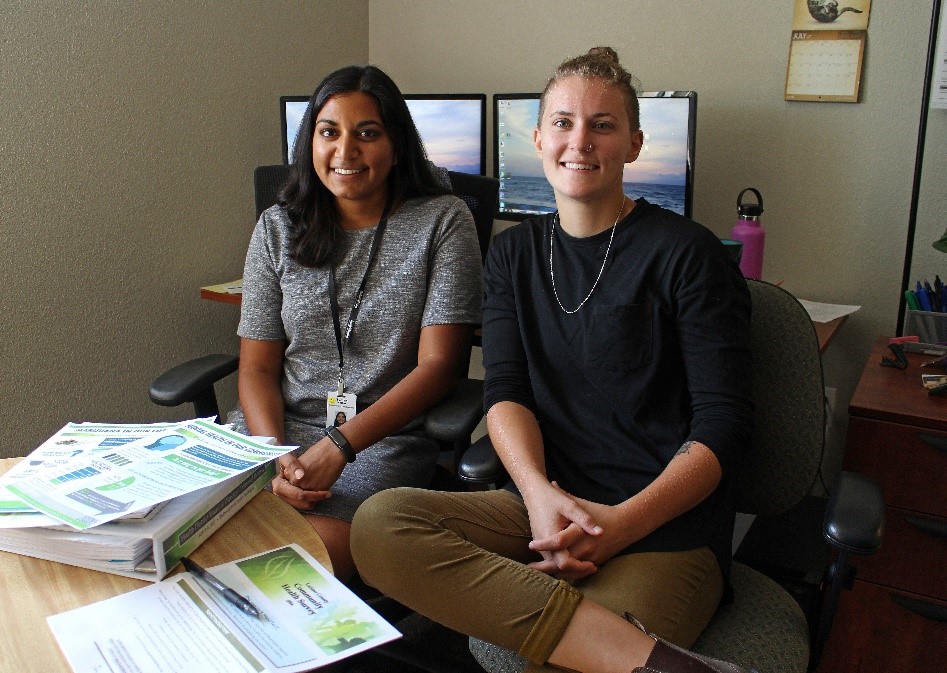Suman Mathur’s door was always open. If Nichole Monhait had a question or an idea, if she just needed to talk something through, Suman was available. That, among many other things, is what Nichole appreciated as they built their working relationship.
And Nichole, beyond being a hard worker and critical thinker, could look at data sets and figure out what’s important, “because you can’t use every bit of data,” Suman explained. “Nichole’s really good at data visualization and making data accessible. Plus, the nature of public health is it changes a lot and Nichole is really adaptable.”
Suman, an evaluation and data specialist with the Health District of Northern Larimer County, was Nichole’s practicum preceptor over the summer, and the symbiosis with which they worked – particularly on fact sheets about heart health and cancer screening based on data from the 2016 Community Health Survey – highlights the importance of the relationship between MPH student and practicum preceptor.
A practicum preceptor is the professional within an organization who agrees to work with the student during their practicum – overseeing their work on projects, discussing their progress and helping them understand public health in action.
“Developing a relationship with a practicum preceptor can be one of the most valuable parts of the whole practicum experience – this person can serve as an important connection to a job, either within their organization or serve as connection to a different organization or profession,” explained Dr. Molly Gutilla, an assistant professor in the Colorado School of Public Health at CSU and a practicum advisor. “In a good practicum, students will learn new skills, learn about the organization, complete a project, etc. and in a GREAT practicum they will do all of that AND create strong relationships with their preceptor and others in the organization.”
Working with preceptors
Pooja Tandukar, a second-year MPH student in the Global Health and Health Disparities concentration, completed her practicum over the summer with the North Colorado Health Alliance, working specifically on a literature review regarding barriers for refugee populations and ways to overcome them. Her preceptor was Rachel Artz-Steinberg.
“One of the ways I knew that I would be a good fit with my practicum preceptor was my discussing objectives and goals of the practicum project and how it would align with my personal and professional goals,” Pooja said. “It was important to discuss with my preceptor about my working style and her expectation regarding the projects. Once I knew that those goals aligned, I knew that I would be a good fit with my preceptor.”
Beth Stewart, also a second-year MPH student in the Global Health and Health Disparities concentration, emphasized the importance of asking how the preceptor gives feedback, what their working style is, and what they expect of an MPH student completing their practicum with the organization. And, she said, a student shouldn’t be afraid to speak up.
“This summer, I worked with Farms for Orphans and as a practicum student my relationship with my preceptor was professional but I felt like we saw each other as equals,” Beth said. “As our schedules varied on a weekly basis, I would initiate times to meet either in person or via phone to talk about the current projects I was working on or to discuss feedback over the materials I sent. I also felt like my preceptor respected my time and acknowledged the efforts that I was making, so that was really nice.”
Kendra Bigsby, assistant director of the ColoradoSPH at CSU and a practicum advisor, said a good working relationship with a preceptor often begins with communication before a student even begins the practicum: ” Not only does the preceptor need to be available as a resource and guide for the student, but the preceptor and the student need to be on the same page in terms of expectations and outcomes. Much of the work that students do before they begin their practicum lays the groundwork for establishing important communication protocols.”
“The practicum time should be used to create a professional relationship with the preceptor that can last throughout the student’s career,” Gutilla said.

